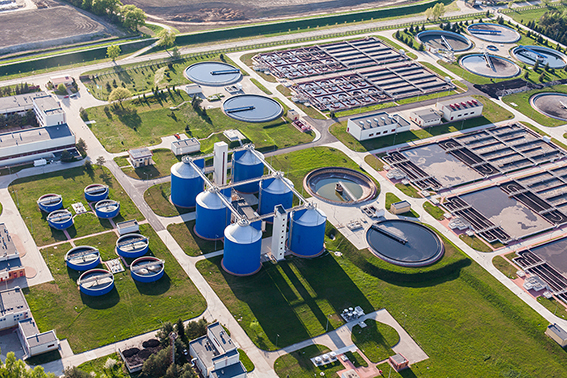A clear understanding of asset health is critical in delivering resilient water and wastewater services, both now and as we prepare for a less certain future, writes
Lila Thompson, chief executive at British Water.
In May, the chief executive of the National Infrastructure Commission (NIC), James Heath, wrote to Ofwat chief executive, David Black, expressing concerns about asset management in the water sector. The letter highlights the need for greater consistency in measuring asset condition, and a more forward-looking approach to maintenance and investment.
It also encourages Ofwat to take a lead in developing consistent metrics for measuring asset health, and to work closely with water companies to improve the sector’s understanding of its assets.
This approach would be a much-needed step forward. British Water members have been ramping up investment in people and technologies and restructuring their organisations, in preparation for the Asset Management Plan period – AMP8, and, therefore, stand ready to support any moves to improve asset health and optimisation as these issues grow more pressing.
Here are five ways the water sector can improve asset health and build resilience for the future:
1. Data and analytics
Water companies must continue to invest in digital transformation, identifying and implementing technologies that effectively collate data and carry out analytics to capture a better understanding of their assets’ condition. This will feed into predictive models that can help manage risk, and identify when assets are likely to fail, so repairs can be scheduled before they disrupt operations and services. Picking up on David Black’s response to James Heath in June, this will also enable better insights into asset performance by age, pipe material and soil type, to assess the long term capability of assets.
2. New technologies
Innovation is moving apace in the water sector and beyond, and many emerging technologies can be used to improve asset health and resilience. For example, drones are being used to inspect hard-to-access assets for damage, and greater numbers of sensors are being deployed to monitor asset performance. An embedded innovation culture, behaviours that foster innovation and space to create and truly build collaborative partnerships need to become commonplace across the sector if new technologies are to be effectively trialled, deployed and rolled out.
3. Stronger partnerships
We need to continue to explore ways to forge stronger, long-term partnerships with other organisations, particularly with those in adjacent sectors where best practice can be adopted. This could help accelerate the development of new technologies and solutions and improve asset health.
4. Risk-based approach
Access to higher quality information about assets makes it possible for water companies to adopt a risk-based approach to asset management. This means focusing resources on the assets that are most at risk of failure.
5. Build public awareness
Public awareness on asset health and resilience and – critically – what is being done to address any problem areas should become an increasing focus. This would help generate support for investment in new technologies and solutions.
Undoubtedly, many positive innovations, technologies and partnerships are already happening at pace across the UK water sector. Still, an urgent need remains for a more comprehensive and forward-looking approach to improving asset health and building resilience which will require an accompanying, sufficient step up in investment spanning many years.
Key stakeholders such as water companies, regulators and the supply chain should work collaboratively to develop consistent metrics for defining and measuring asset health. These metrics would take a long-term view focusing on the future condition of assets rather than just the point of failure.
To aid this process, British Water has recently established an Asset Management Focus Group with representatives from across the sector who will look at key areas where there are gaps and learnings that can be shared to strengthen the sectors’ capabilities. The group will also seek to encourage a regulatory environment that fosters good asset health.
Ofwat has already conducted an Asset Management Maturity Assessment with water companies.
The data collected from this assessment can be used to inform a more comprehensive and forward-looking understanding of asset health. This is particularly important as water companies in England and Wales approach the next AMP, which starts on 1 April 2025 and runs for five years.
When setting capital budgets for the upcoming period, economic regulator Ofwat has pledged to provide incentives for businesses to “maintain and improve asset health” and have a “greater focus on asset stewardship for the long-term.”
A significant step up in the level of engagement with the supply chain will be necessary to ensure the successful delivery of future projects in England and Wales, as well as Scotland and Northern Ireland. By implementing these approaches, the water sector can enhance its understanding of asset health and make informed decisions to improve asset resilience.



